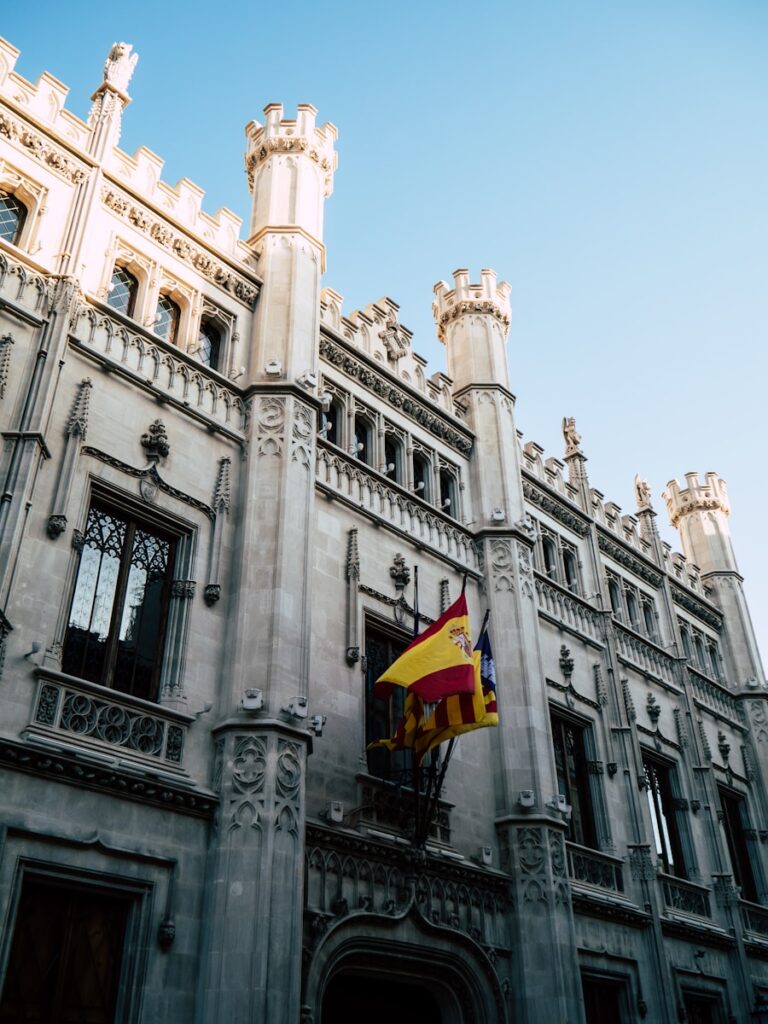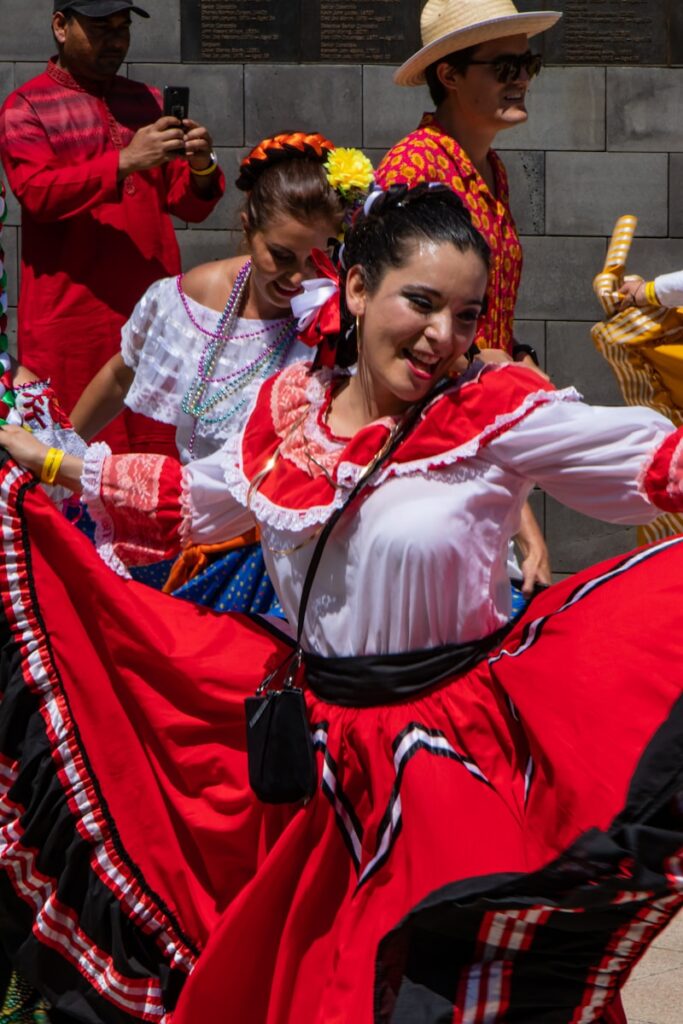How Do You Say “I Appreciate It” in Spanish? A Detailed Guide
Imagine you’re in a bustling market in Madrid. You’ve just bought the most delicious churros from a friendly vendor, and you want to express your gratitude. You could fumble with broken Spanish or, even worse, rely on a simple “thank you.” But wouldn’t it be great to say “I appreciate it” in a way that truly conveys your feelings?
Saying “I appreciate it” in Spanish goes beyond a basic “gracias.“ It’s about connecting on a deeper level, showing that you genuinely value someone’s effort or kindness. Picture the vendor’s smile widening as you say, “Te lo agradezco.“ It’s a small gesture, but it can make a big difference.
Te lo agradezco: The Most Common Way to Express Appreciation in Spanish
When expressing appreciation in Spanish, Te lo agradezco stands out as the most common and impactful phrase. Unlike a simple “thank you,” this phrase conveys deeper gratitude, making it perfect for formal situations or when you really want to show your appreciation.
Breaking Down “Te lo agradezco”
To fully understand Te lo agradezco, let’s break the phrase down into its components.
“Te” – To You
Te translates to “to you.” It indicates the recipient of your appreciation, ensuring your gratitude is directed precisely at the person you’re thankful to. Next time you’re acknowledging someone’s effort, think about how personalized their action was.
“Lo” – It
Lo means “it,” referring to the action or help you’re acknowledging. This little word attaches significance to the entire phrase, ensuring the recipient knows exactly what you’re appreciating.
“Agradezco” – I Appreciate
Agradezco translates to “I appreciate.” This verb drives the sentiment of gratitude in the phrase, turning a simple thank you into a heartfelt acknowledgment.
When to Use “Te lo agradezco”
Te lo agradezco is versatile yet best suited for formal contexts. Use it when thanking someone you don’t know well or someone in a position of respect such as coworkers, elders, and higher-ups in your professional life. This phrase adds a touch of sincerity and respect to your appreciation, making it more meaningful.
Formal vs. Informal Usage
Formality matters in Spanish, and choosing the right phrase strengthens personal connections. Here’s a quick comparison:
Formal Usage Examples:
Context | Formal Phrase | Informal Alternative |
|---|---|---|
Thanking a coworker | Te lo agradezco | Te agradezco |
Showing gratitude to an elder | Le agradezco mucho | Muchas gracias |
Choosing between formal and informal phrases in Spanish shows respect and appreciation. Use Te lo agradezco to enrich your expressions of gratitude and deepen your connections with Spanish speakers.
Alternative Expressions for “I Appreciate It” in Spanish

Expressing gratitude in a language other than your own can feel challenging. Spanish offers rich and varied ways to convey appreciation. Let’s explore some alternatives to help you deepen your connections when speaking Spanish.
“Gracias” and “Muchas gracias”: Simple Yet Effective
“Gracias” and “Muchas gracias” are the bread and butter of Spanish gratitude. They’re easy to remember and quick to say.
“Estoy agradecido/a”: Expressing Gratitude
When you need to be more formal, “Estoy agradecido/a” (I’m grateful) is the way to go. It’s perfect for situations where a simple thank you isn’t enough.
It’s a phrase that fits well in professional settings or when talking to someone you respect.
“Lo aprecio”: A Direct Translation
“Lo aprecio” translates directly to “I appreciate it.” If you want to express sincere appreciation without sounding too formal, this one’s for you.
“Te estoy muy agradecido/a”: Emphasizing Your Appreciation
For those moments when getting personal is key, “Te estoy muy agradecido/a” adds a personal touch. It means “I’m very grateful to you.”
To make things clearer, here’s a quick reference table for gender adjustments:
Phrase | Masculine Form | Feminine Form |
|---|---|---|
I’m grateful | Estoy agradecido | Estoy agradecida |
I’m very grateful (personal) | Te estoy agradecido | Te estoy agradecida |
Incorporating these phrases into your Spanish conversations can help you express your feelings more accurately and strengthen your connections with others. So why not give it a try? You’ll find that a little extra effort goes a long way.
Regional Variations of Expressing Appreciation in Spanish
Expressing appreciation in Spanish varies depending on the region. These nuances add richness to the language and help connect more genuinely with Spanish-speaking individuals from different countries.
Spain: “Te lo agradezco mucho”
In Spain, you’ll often hear “Te lo agradezco mucho” (IPA: /te lo a.ɡɾa.ˈðes.ko ˈmu.ʧo/) when someone really wants to emphasize their gratitude. Imagine your friend helping you move on a hot day, and you turn to them, saying this phrase with a smile. If you say “Te lo agradezco mucho” instead of a simple “thank you,” it feels more heartfelt and genuine.
Mexico: “Se lo agradezco”
In Mexico, the phrase “Se lo agradezco” (IPA: /se lo a.ɡɾa.ˈðes.ko/) is commonly used. Picture exploring your way in a bustling market, and a vendor kindly helps you find that special item. Saying “Se lo agradezco” not only shows politeness but also a deeper respect for their assistance. This phrase, with its more formal touch, can create a sense of connection and appreciation in everyday interactions.
Argentina: “Te lo re agradezco”
In Argentina, you’ll often hear “Te lo re agradezco” (IPA: /te lo re a.ɡɾa.ˈðes.ko/). Think about a friend in Buenos Aires going out of their way to show you around the city. Responding with “Te lo re agradezco” adds an informal yet genuinely warm tone to your gratitude. The “re” emphasizes how thankful you are, reflecting the friendly and expressive nature of Argentine Spanish.
Colombia: “Le agradezco”
In Colombia, people usually say “Le agradezco” (IPA: /le a.ɡɾa.ˈðes.ko/). Imagine a colleague in Bogotá helping you navigate through work intricacies. Using “Le agradezco” conveys formal gratitude and respect, highlighting the courteous communication style prevalent in Colombia. This phrase makes your thankfulness clear and sincere.
Country | Phrase | IPA Pronunciation | Usage Example |
|---|---|---|---|
Spain | Te lo agradezco mucho | /te lo a.ɡɾa.ˈðes.ko ˈmu.ʧo/ | Friend helping you move |
Mexico | Se lo agradezco | /se lo a.ɡɾa.ˈðes.ko/ | Vendor assisting you in a market |
Argentina | Te lo re agradezco | /te lo re a.ɡɾa.ˈðes.ko/ | Friend guiding you through the city |
Colombia | Le agradezco | /le a.ɡɾa.ˈðes.ko/ | Colleague helping with work tasks |
Next time you’re expressing gratitude in Spanish, try using one of these region-specific phrases. Not only will you show appreciation, but you’ll also connect on a personal level, making your interactions more meaningful.
Levels of Appreciation in Spanish: From Casual to Formal

Diving into the ways you can express appreciation in Spanish is fascinating and rewarding. Each phrase encapsulates different levels of emotion and formality. How about exploring some phrases you could use?
Casual Appreciation: “Gracias, lo aprecio”
Everyone loves hearing a sincere thank you, right? When you want a casual yet genuine way to show your gratitude, “Gracias, lo aprecio” (Thanks, I really appreciate that) is perfect. Think of it as your go-to for everyday interactions.
Imagine you’ve just finished a workout session with a friend. They’ve gone out of their way to help you. As you both cool down, you simply say, “Gracias, lo aprecio.” It’s short, sweet, and lets your friend know their effort means a lot.
Heartfelt Appreciation: “No sabes cuánto lo aprecio”
Sometimes, the depth of your gratitude can’t be captured with a simple thanks. Enter “No sabes cuánto lo aprecio” (You don’t know how much I appreciate it). This phrase is solid when you want to convey sincere, heartfelt appreciation.
Picture receiving unexpected support during a tough time. Your friend listens and offers advice that lifts a weight off your shoulders. You look them in the eye and say, “No sabes cuánto lo aprecio.” This phrase shows you’ve been deeply touched by their kindness.
Formal Appreciation: “Le estoy sumamente agradecido/a”
In formal or professional settings, a more polished expression of gratitude is essential. That’s where “Le estoy sumamente agradecido/a” (I am deeply grateful to you) comes in handy. It’s formal and conveys profound appreciation, making it ideal for professional scenarios.
Let’s say you’ve just completed a significant project. Your mentor provided crucial guidance throughout. You send them an email, ending with, “Le estoy sumamente agradecido/a.” This formal yet warm phrase perfectly matches the professionalism of the interaction.
Level | Spanish Phrase | English Translation |
|---|---|---|
Casual | Gracias, lo aprecio | Thanks, I really appreciate that |
Heartfelt | No sabes cuánto lo aprecio | You don’t know how much I appreciate it |
Formal | Le estoy sumamente agradecido/a | I am deeply grateful to you |
Choosing the right level of appreciation not only reflects your emotional state but also strengthens your connections with others. Each phrase serves as a nuanced way to say “I appreciate it,” tailored to the context and your relationship.
Cultural Context of Gratitude in Spanish-Speaking Countries
Appreciation in Spanish-speaking cultures goes beyond mere words. Embedded in daily interactions, gratitude isn’t just expressed but felt deeply. Understanding how and when to show thanks enhances your cultural connections.
The Importance of Expressing Appreciation
In Spanish-speaking countries, saying gracias isn’t enough; sincerity matters. Why should you care about authentic gratitude? It strengthens bonds and conveys respect. Have you ever noticed how heartfelt appreciation makes interactions warmer?
Common Situations to Express Appreciation
Whether you’re traveling or conversing with Spanish-speaking friends, knowing when to express gratitude can make all the difference. Imagine being invited to a meal or receiving help. In these moments, saying muchas gracias (thanks a lot) or te agradezco mucho (I appreciate it) shows genuine appreciation.
Here’s a table summarizing common phrases and when to use them:
Situation | Common Phrase | Meaning |
|---|---|---|
Informal | Te agradezco | I appreciate it |
Formal | Le agradezco mucho | I appreciate it very much |
Receiving a gift | Mil gracias | A thousand thanks |
After a meal | Gracias por la comida | Thanks for the food |
Nonverbal Ways to Show Gratitude
Words aren’t the only way to express appreciation. Nonverbal cues speak volumes. A warm smile or a slight bow conveys thanks when words might not suffice. Have you ever felt someone’s gratitude through their actions?
Practices like these ensure your gratitude feels genuine:
Understanding these nuances lets you connect on a deeper level with Spanish-speaking cultures. By incorporating both verbal and nonverbal expressions, your appreciation feels more heartfelt and genuine.
Common Mistakes to Avoid When Saying “I Appreciate It” in Spanish

Expressing appreciation is more than just choosing the right words. It’s also about context, culture, and connection. Let’s explore some pitfalls to watch out for when saying “I appreciate it” in Spanish.
Literal Translations: Why “Yo Aprecio Esto” Doesn’t Work
Translating word-for-word from English to Spanish can lead to awkward expressions. Though it might seem like “Yo aprecio esto“ correctly translates “I appreciate it,” native speakers rarely use it. Instead, opt for “Te lo agradezco” for a more natural feel. If you need to be more formal, “Se lo agradezco mucho” works wonders. Imagine you’re thanking a host for an incredible dinner; you’d pick the phrase that conveys warmth and sincerity.
Overusing “Gracias”: When It’s Not Enough
Sometimes, just saying “gracias” won’t cut it. In more meaningful situations, you need to convey deeper gratitude. Think about the last time someone did you a major favor—just saying thanks feels a bit flat, right? Instead, try “muchas gracias” or even “mil gracias” if you’re profoundly grateful. These phrases show you really mean it and haven’t just gone on autopilot.
Mixing Up Formal and Informal Expressions
Using the right level of formality is crucial. Addressing your boss with “te lo agradezco” might come off as too familiar, while “se lo agradezco” hits the right respectful tone. Picture it like addressing your friend versus your professor—you naturally switch how formal you are to match the relationship. Getting this right ensures you don’t accidentally seem disrespectful or overly distant.
Neglecting Regional Differences in Expressions of Gratitude
Regional variations can also trip you up. What’s common in Spain might seem strange in Mexico. For instance, while “mil gracias” is universally understood, different regions have unique customs. Suppose you’re in Argentina; terms like “che, muchas gracias” could feel more authentic. Paying attention to these nuances shows you respect not just the language but the culture, fostering a deeper connection.
Context | Informal Phrase | Formal Phrase |
|---|---|---|
Everyday Thanks | Gracias | Muchas gracias |
Deep Gratitude | Mil gracias | Se lo agradezco mucho |
Appreciating Specific Action | Te lo agradezco | Se lo agradezco |
Making an effort to get these subtleties right doesn’t just make your Spanish better—it makes your interactions richer and more genuine. If someone’s taking the time to help you or make you feel welcome, showing thoughtful gratitude in their language amplifies your appreciation. So next time you’re in a Spanish-speaking setting, remember these tips, and you’ll be sure to leave a lasting impression.
Mastering “I Appreciate It” in Spanish Conversations
Expressing appreciation in Spanish goes beyond just words. It involves understanding the nuances, body language, and the right context to make your thankfulness resonate deeply. Let’s explore how pairing appreciation with specific actions, enhancing gratitude with body language, and using the right adverbs and adjectives enriches your conversations.
Pairing Appreciation with Specific Actions
Gratitude becomes more meaningful when you pair it with specific actions. For instance, instead of just saying “Gracias” (Thanks), you could say, “Le agradezco que haya venido” (Thank you for coming). This uses the verb “agradecer” and the subjunctive mood to precisely express what you’re thankful for. Specificity not only clarifies your appreciation but makes it more heartfelt.
Using Body Language to Enhance Your Gratitude
Words alone often fall short in conveying true emotions. Body language plays a significant role in Spanish conversations. Imagine someone laughing heartily and placing their palm towards their stomach; this gesture signifies that they found something very funny. Complementing your words with such gestures makes your gratitude more genuine and relatable.
Adding Emphasis: Adverbs and Adjectives
Adding emphasis through adverbs and adjectives strengthens your expression of gratitude. This can turn a simple thank you into a heartfelt message.
“Realmente” – Really
Use “realmente” to add depth to your thanks. For instance, “Realmente aprecio su ayuda” (I really appreciate your help). Adding “realmente” makes it clear how much you value their assistance.
“Sinceramente” – Sincerely
When you want to express genuine gratitude, “sinceramente” comes in handy. For example, “Sinceramente, te agradezco mucho” (Sincerely, I appreciate you a lot). It conveys that your appreciation is heartfelt and honest.
“Muchísimo” – Very Much
To amplify your gratitude, try “muchísimo”. Saying, “Te lo agradezco muchísimo” (I appreciate it very much) shows an even higher level of appreciation. It indicates a profound sense of thankfulness.
Tables help illustrate this better:
Adverb/Adjective | Usage Example | Translation |
|---|---|---|
Realmente | Realmente aprecio su ayuda. | I really appreciate your help. |
Sinceramente | Sinceramente, te agradezco mucho. | Sincerely, I appreciate you a lot. |
Muchísimo | Te lo agradezco muchísimo. | I appreciate it very much. |
Integrating these elements into your Spanish conversations makes your appreciation genuine, heartfelt, and impactful. So, why not elevate your interactions by mastering these subtleties?
Conclusion: Embracing Gratitude in Spanish
Mastering how to say “I appreciate it” in Spanish goes beyond just words. It’s about capturing the essence of genuine appreciation and understanding the cultural nuances. By using phrases like “Te lo agradezco” and being mindful of formality and regional differences, you’re not just communicating—you’re connecting.
Remember to pair your words with meaningful actions and body language. Adding adverbs and adjectives can make your gratitude feel even more heartfelt. With these tips, you’ll be well on your way to expressing sincere and impactful appreciation in any Spanish-speaking context.
Frequently Asked Questions
What does “Te lo agradezco” mean in English?
“Te lo agradezco” translates to “I appreciate it” in English. It is a way to express heartfelt gratitude.
Why should I use “Te lo agradezco” instead of just “gracias”?
“Te lo agradezco” conveys deeper appreciation and sincerity compared to the more general “gracias.” It is often used to express gratitude for more significant favors or actions.
Are there formal and informal ways to express gratitude in Spanish?
Yes, Spanish has formal and informal expressions of gratitude. For example, “Le estoy muy agradecido” is formal, while “Gracias” or “Te lo agradezco” can be used informally.
What are some common mistakes to avoid when expressing gratitude in Spanish?
Avoid literal translations like saying “Yo aprecio esto” and overusing “gracias.” Make sure to use expressions that match the formality of the situation and be mindful of regional differences.
How can I make my gratitude sound more genuine in Spanish?
Pair your appreciation with a specific action or reason, use positive body language, and incorporate adverbs and adjectives like “realmente,” “sinceramente,” and “muchísimo” to add depth.
Can body language enhance expressions of gratitude in Spanish conversations?
Absolutely, body language such as making eye contact, smiling, and nodding can enhance your verbal expressions of gratitude, making them more heartfelt and effective.
Are there regional differences in how gratitude is expressed in Spanish-speaking countries?
Yes, different regions may have unique phrases and customs for expressing gratitude. It is essential to be mindful of these differences to ensure your appreciation is understood correctly.
Can you give an example of pairing appreciation with a specific action?
Sure! Instead of just saying “Gracias,” you can say “Gracias por ayudarme con el proyecto” which means “Thank you for helping me with the project.” This specificity adds sincerity to your gratitude.






